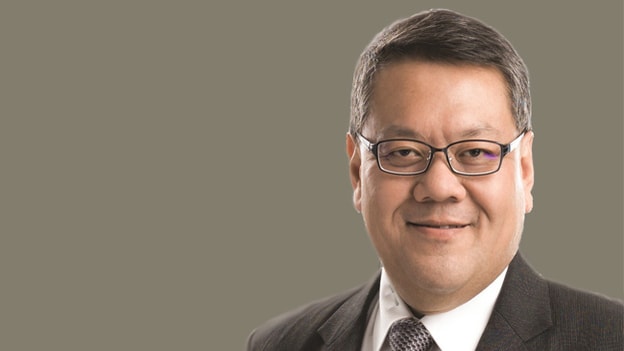How Great Eastern is making HR processes seamless

As businesses digitalize, the HR function has to keep up too. What is actually involved in HR digitalization, though, and what should the priorities be?
People Matters asked James Lee, Managing Director, Group Human Capital at Great Eastern, what he and his team have been doing to take the HR function digital and how their progress is going. An old hand who has been with the company since 1997, James has been heading human capital and change programs across the Great Eastern group for the last six years. Here's what he shared about Great Eastern's digital HR strategy.
You've mentioned that Great Eastern already began digitalizing some years ago. What are the key HR tech investments you've made and how are they working out?
In this digital age, employees are more digitally savvy and expect a certain level of simplicity in their dealings with HR.
Modern technology provides opportunities for more seamless HR processes with increased efficiency, more dynamic learning and development programs and greater employee engagement.
Our HR tech investments spread across key areas such as our hiring process, learning and development, performance and talent management. The technological investments were targeted and aligned with the broader workplace transformation program as an enabler to the organization’s business transformation strategy.
In the hiring process
We invested in an end-to-end workflow management system that comprises an integrated workforce management system, applicant-tracking system and candidate management system, which ensures the entire headcount requisition to candidate on-boarding process is fully digitized and paperless.
We are in the process of piloting and on-boarding several AI-enabled hiring assessment platforms (which includes video assessments) to sharpen our ability to hire for cultural and technical fit.
We are also setting up a digitalized alumni management/referral platform and a passive candidate management system to harness the power of passive talent pipelines which will reduce the time spent to seek suitable candidates for open positions and help save costs. These platforms will be eventually integrated with our candidate management system to ensure that there is a seamless candidate experience and journey in all their engagements with us.
In learning & development
Learning and Development is a key focus area. We want to enable our workplace transformation program by using digital technology to future-ready our employees and building the right capabilities as we transform our business and operating model.
On this front, we have invested in “on-the-go” and “bite-sized” learning via LinkedIn Learning which enables employees to gain knowledge via their digital gadgets anytime, anywhere. Learning pathways are also developed to help employees pick up relevant skills and knowledge that are tied to their individual career pathways.
We have also invested in a Learning Management System (LMS) to improve the learning journey for our employees. LMS integrates the development/performance management cycle with the learning application/approval workflows. At the same time, it allows managers to monitor and view the developmental gaps of their teams and individuals via dashboards. Competency pathways are also integrated within the system to allow employees to build their skillsets that are aligned with their career aspirations.
The LMS has also been used to support the delivery of our cultural activation program We rolled out our first interactive e-learning module on our generic skills and competencies which guides how employees should behave to achieve organizational outcome. This e-learning module featured staff narrating real-life everyday scenarios which demonstrated the actualization of their behavior
In support of a shift towards an environment which promotes continuous learning and feedback, a new performance management system was implemented to facilitate regular coaching and performance conversations between employees and line managers. This is a departure from the previous approach of an annual conversation.
What benefits have you observed from digitalizing HR processes during the last few months? What's worked, or what could have worked better?
As a digitally-forward company, we are always looking to improve our candidate experience and streamline our talent acquisition process.
We started digitalizing our recruitment process even before COVID-19. At the beginning of 2020, we introduced an end-to-end recruitment solution which digitalizes the hiring process from requisition to interview to the offer, providing a seamless candidate experience. This was a great benefit when the pandemic worsened and face-to-face interactions were discouraged.
We will soon be launching an AI-enabled platform with video interviews, which will enhance virtual recruitment in a data enabled environment. Candidates will be assessed on cognitive ability as well as certain role-specific attributes which align back to our Generic Skills and Competencies – the tool assesses body language, verbal responses, gamified assessments, etc.
Our investments in HR Tech have allowed us not just to support the delivery of our HR work tasks during this pandemic, but helped shift the way work is done in the organization.
Of course, while technology is useful, there are areas in which there are limitations and it does not support certain aspects such as socialization, brainstorming of ideas and interaction as well. Hence, while we continue to transform digitally, we should not lose sight of the human to human and face to face interaction which generates energy that interaction over digital media and platform cannot replicate.
Moving forward, how do you plan to continue leveraging technology?
In addition to having the right technology and infrastructure, building a digital mindset among our people is crucial to getting alignment and support throughout the organization in our digital transformation journey.
With this is mind, we developed a #FutureReady Framework to build a skilled and adaptable workforce that is future ready.
The framework includes seven skill pillars essential in enabling digital transformation and supporting our business growth pillars:
-
-
-
- Digital Business Model & Ecosystems
- Technology & Data
- Risk & Governance
- Customer Centricity
- Domain Expertise
- The Way We Work
- Leadership in the Digital World
-
-
To help develop and align our employees towards a targeted set of skills that enables digital transformation, training programmes, learning approaches and developmental pathways tailored for different proficiency levels will be curated for each skill pillar.
We also introduced our first Digital Skills Learning Carnival in 2018 and #FutureReady Learning Carnival in 2019. Through these digital carnivals, employees are introduced to emerging technologies and how they could leverage these for business outcomes.
Through the training and hands-on learning, we aim to engage and align our employees and bring about innovation not just from the top but also from the ground up.
Could you share what's worked to ensure that your team is able to make the best use of the technology?
Technology remains an enabler and the key to ensuring technology and digitalization work. Processes must be streamlined and employee journeys must always be designed first.
In line with our digitalization journey, we are constantly reviewing our internal processes for better employee experience. With our #FutureReady learning framework, employees are now also more receptive to new technologies and systems. Effort is made through planned change management processes supported by communications, aiding employees in understanding the reason for the change and encouraging the right mindset in viewing the new process, system or ways of working.














